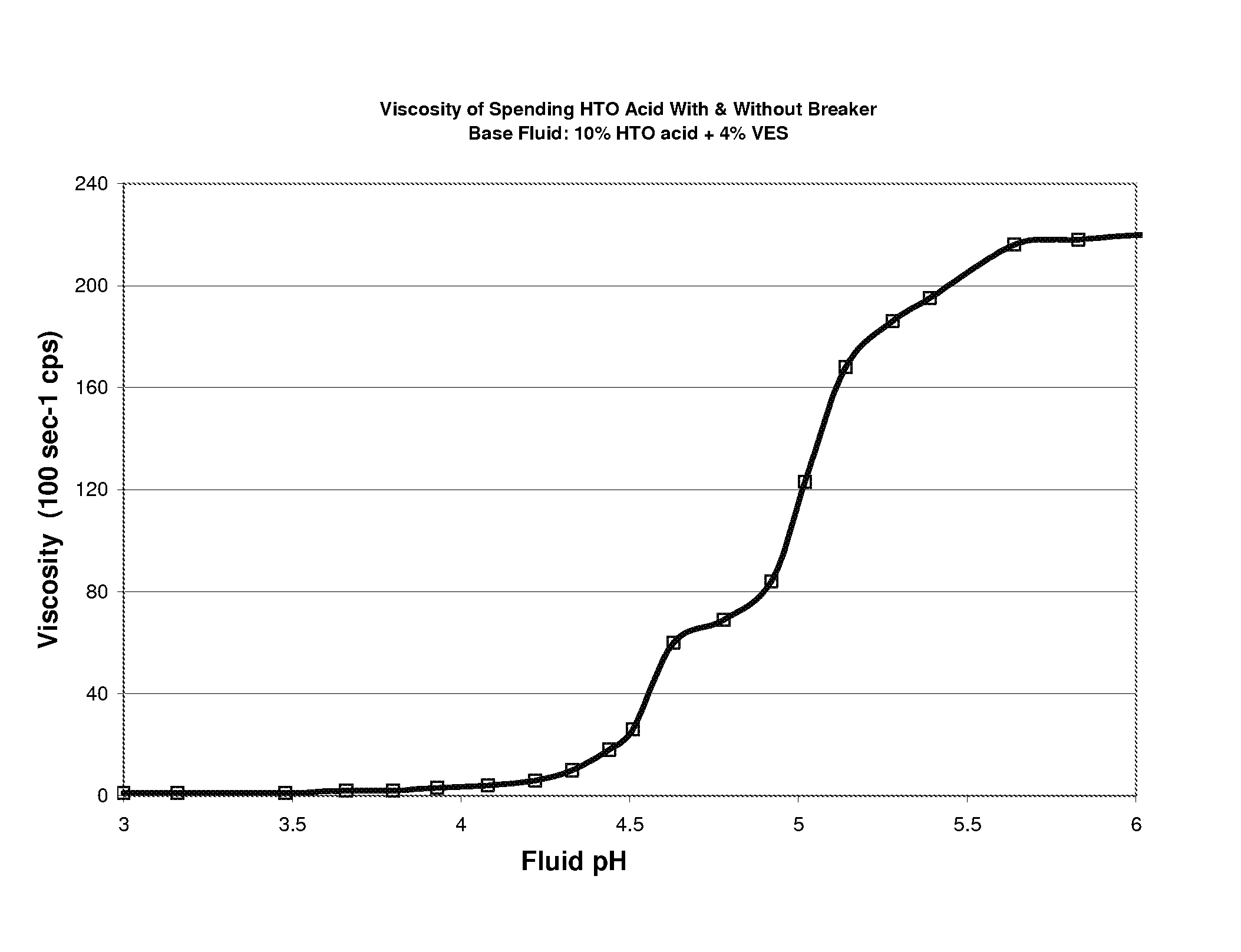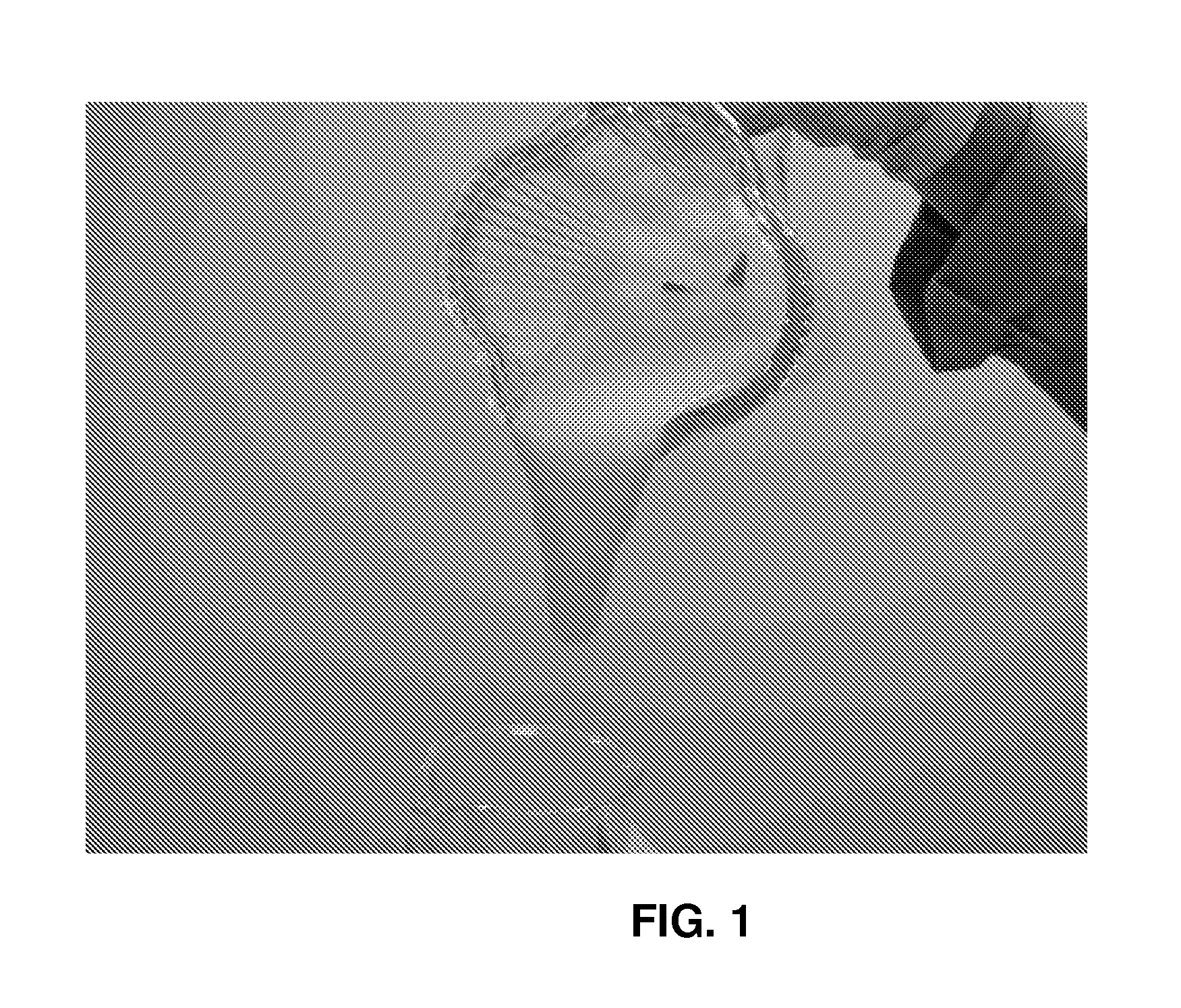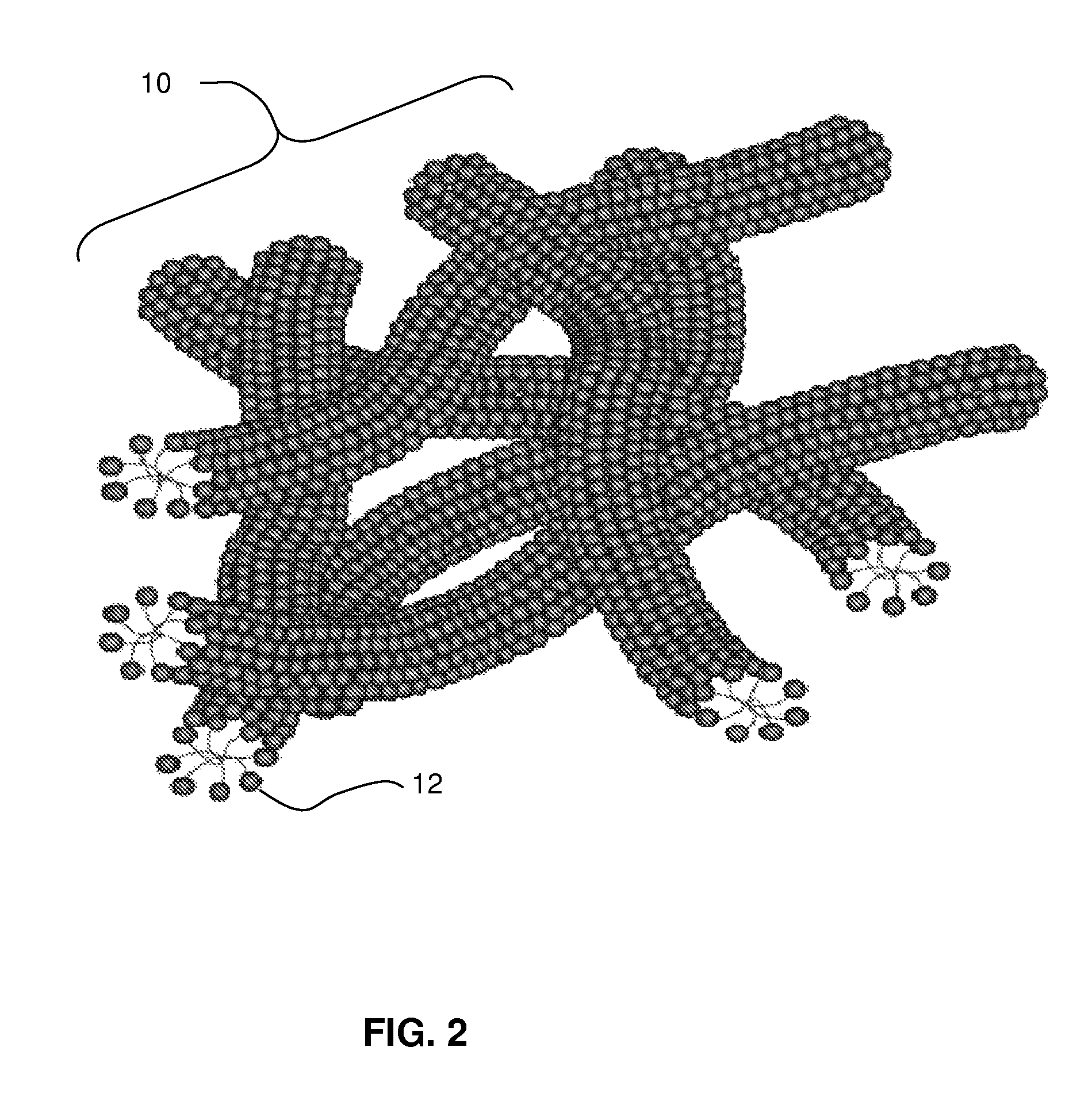Organic acid treating fluids with viscoelastic surfactants and internal breakers
a technology of viscoelastic surfactants and internal breakers, which is applied in the direction of fluid removal, chemistry apparatus and processes, and well accessories, etc. it can solve the problems of affecting the flow of well fluids, and affecting the recovery efficiency of hydrocarbons, so as to reduce the viscosity of the viscoelastic surfactant gelled spent acid fluid, effectively divert the trailing acid fluid, and easy and readily recovery
- Summary
- Abstract
- Description
- Claims
- Application Information
AI Technical Summary
Benefits of technology
Problems solved by technology
Method used
Image
Examples
example 1
[0067]Shown in FIG. 4 are the results of plotting viscosity as a function of fluid pH for two aqueous fluids gelled with 4% of an amidoamine oxide VES containing 10% HTO acid, one with an internal mineral oil breaker 3 gptg herein, and one without. Both fluids had identical curves and indicate that viscosity increases with increasing pH. This indicates that these fluids would start out with water-like viscosity, but when the acid reacts with the carbonate, is neutralized and the pH rises, the viscosity of the fluid will increase. This data also indicates that presence of internal breaker, such as mineral oil, did not influence or prevent the VES gelling agent from yielding fluid viscosity upon acid spending. That is, presence of the mineral oil did not initially prevent or weaken the formation of viscous rod-like micelles by the VES gelling agent. This is a novel and unique phenomena, and is also synergistic. That is, what is believed novel and synergistic is the ability of a single...
example 2
[0068]Results showing the effect of using the mineral oil breaker on a VES-gelled acid-spent fluid at 140° F. (60° C.) are presented in FIG. 5 plotting viscosity as a function of shear rate. It is readily seen that when no breaker is present, the viscosity is maintained at 4000 cps at very low shear rates, but when a breaker is present and has been fully activated (100% broken), the spent-acid VES-gelled fluid viscosity is close to zero, or water-like consistency at low shear rates.
example 3
[0069]FIG. 6 is a graph of viscosity as a function of time for two VES-gelled aqueous fluids containing spent HTO acid using two different amounts of mineral oil type internal breaker measured at 160° F. (71° C.) and a shear rate of 100 s−1. It may be readily seen that the viscosity is reduced over time for both fluids, and that the viscosity of the fluid having 5 gptg mineral oil reduces faster than the one containing 3 gptg mineral oil.
PUM
| Property | Measurement | Unit |
|---|---|---|
| temperature | aaaaa | aaaaa |
| wt % | aaaaa | aaaaa |
| kinematic viscosity | aaaaa | aaaaa |
Abstract
Description
Claims
Application Information
 Login to View More
Login to View More - R&D
- Intellectual Property
- Life Sciences
- Materials
- Tech Scout
- Unparalleled Data Quality
- Higher Quality Content
- 60% Fewer Hallucinations
Browse by: Latest US Patents, China's latest patents, Technical Efficacy Thesaurus, Application Domain, Technology Topic, Popular Technical Reports.
© 2025 PatSnap. All rights reserved.Legal|Privacy policy|Modern Slavery Act Transparency Statement|Sitemap|About US| Contact US: help@patsnap.com



